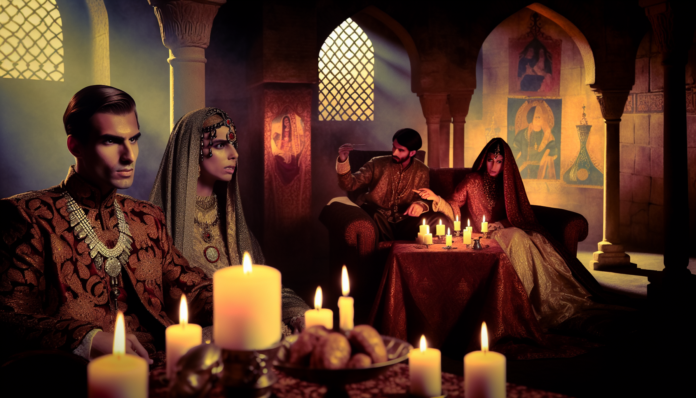Introduction
When we think of scandalous love affairs, few compare to the infamous relationship between King Henry VIII of England and Anne Boleyn. Their passionate yet tumultuous affair didn’t just shake the foundations of the English monarchy; it also sowed the seeds of betrayal that led to treachery and ultimately, murder. The 16th century was a time when societal norms dictated strict moral codes, especially for those in power. This context makes the scandal even more compelling, as it reveals how love and ambition can collide tragically in the corridors of power.
The Scandal
The affair between Henry VIII and Anne Boleyn began in the early 1520s, while Henry was still married to Catherine of Aragon. Driven by desire and ambition, Henry sought the annulment of his marriage, believing Anne was his true love and the answer to his longing for a male heir.
-
Key Events:
- In 1525, Henry began openly courting Anne, who was then a lady-in-waiting to his queen.
- Henry’s request for an annulment was met with resistance from the Pope, leading to a break from the Catholic Church and the establishment of the Church of England.
-
Reactions:
- The court was rife with gossip about their relationship, and Anne’s reputation quickly became a topic of fierce debate. Some viewed her as a scheming seductress who had ensnared the king, while others admired her intellect and ambition.
- Quotes:
- As historian David Starkey noted, “Boleyn represented a new type of woman with power and ambition, challenging the established norms of her time.”
Tragedy struck when Anne was accused of adultery, treason, and incest in 1536, leading to her arrest and subsequent execution. The betrayal transcended mere romantic entanglement; it was a clash of loyalty, power, and the dire consequences of crossing royal households.
Moral and Cultural Analysis
Society’s reaction to the scandal was sharp and divisive. While some sympathized with Anne, many condemned her as a harlot who had led a king astray. The court’s reaction was largely colored by the social attitudes of the time, where women were often vilified for asserting their desires.
- Consequences:
- Anne’s execution not only marked the end of her life but also solidified Henry’s status as a monarch acceptable of ruthless decisions for political gain. Ironically, it paved the way for his next marriage to Jane Seymour, who finally bore him a son.
Fast forward to today, and the reactions to such a scandal would be vastly different. Modern audiences often analyze historical events with a lens of feminism and sexual agency, questioning societal norms rather than simply accepting them.
- Modern Perspective:
- If a similar affair were to occur in contemporary society, it might be scrutinized for its implications on gender dynamics and power structures, reigniting conversations about consent and equality in relationships.
This juxtaposition of past and present reveals how societal norms have evolved, and how the narratives we construct around love, betrayal, and ambition continue to shape our understanding of human relationships.

